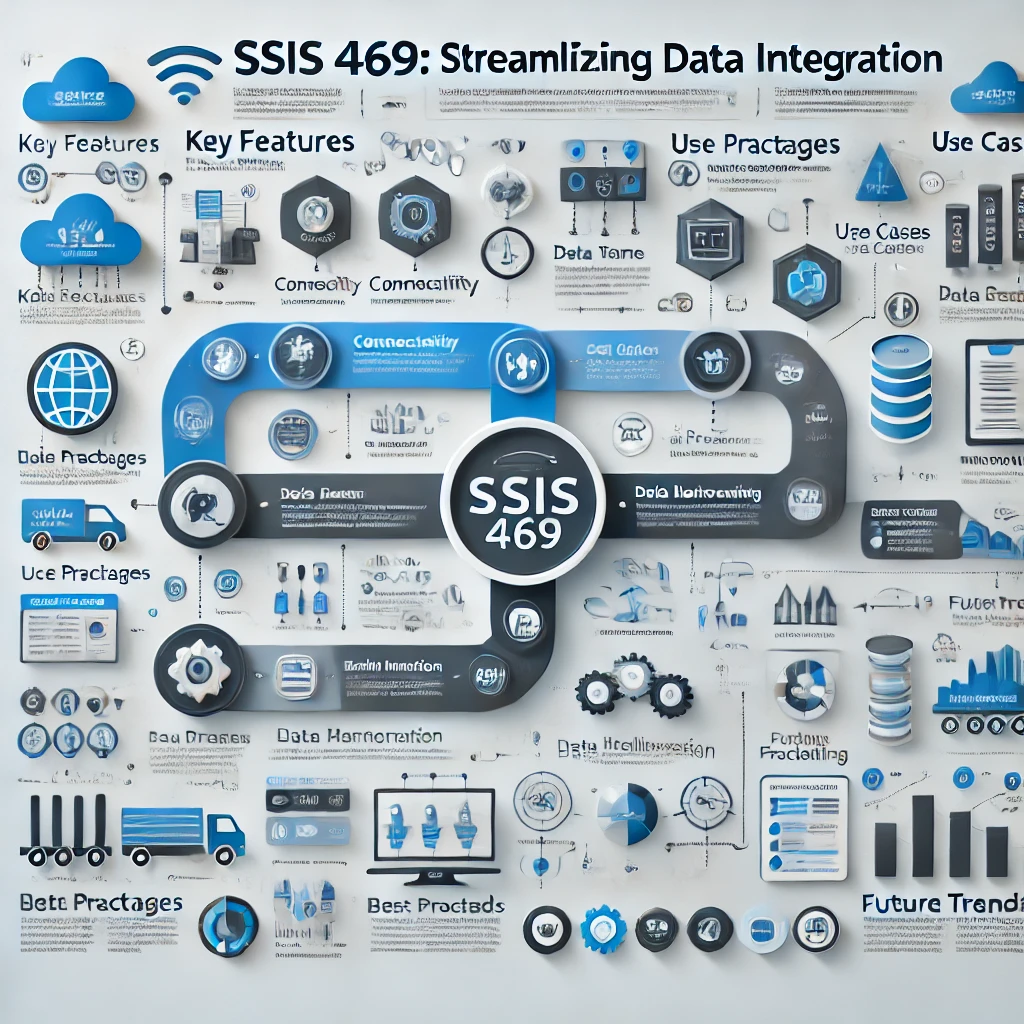In todays datadriven world efficient data integration is paramount for organizations aiming to harness the full potential of their information assets SQL Server Integration Services SSIS-469 emerges as a robust ETL Extract Transform Load tool developed by Microsoft designed to simplify and optimize data integration processes Unlocking the World of Erome
Key Features of SSIS-469
Flexible ETL Processes
SSIS-469 offers a visual development environment enabling users to design and customize ETL workflows tailored to specific business requirements Its userfriendly interface allows for the seamless creation of complex data transformation processes enhancing productivity and reducing development time
Comprehensive Connectivity Options
With support for a wide array of data sources and destinations—including relational databases eg SQL Server Oracle MySQL flat files CSV TXT Excel spreadsheets XML files and cloud platforms such as Azure services—SSIS 469 ensures seamless data flow across diverse systems
Advanced Data Transformation Capabilities
Equipped with a rich set of builtin transformations SSIS 469 empowers users to perform complex data manipulations From data cleansing and aggregation to merging and conditional splitting it ensures data accuracy and consistency throughout the ETL process
Scalability and Performance
Designed to handle large volumes of data efficiently SSIS 469 can scale horizontally by distributing workloads across multiple servers or nodes This scalability ensures optimal performance even in highdemand environments making it suitable for organizations of all sizes
Robust Monitoring and Logging
SSIS 469 includes comprehensive tools for monitoring package execution and logging The SSISDB catalog facilitates the storage and management of packages execution logs and configurations while the Integration Services Dashboard provides visual insights into package execution status aiding in proactive issue resolution
Use Cases of SSIS-469
Data Warehousing
Organizations leverage SSIS 469 to extract data from various sources transform it into a unified format and load it into data warehouses This process supports reporting analytics and informed decisionmaking enabling businesses to derive actionable insights from consolidated data
Data Migration
SSIS 469 facilitates seamless data migration between systems ensuring data integrity and consistency during transitions Whether upgrading legacy systems or consolidating data assets it streamlines the migration process minimizing disruptions and preserving data quality
RealTime Data Processing
With support for realtime data processing SSIS 469 enables organizations to analyze and act upon data insights as they occur This capability is crucial for applications requiring immediate data responsiveness such as monitoring systems and dynamic reporting dashboards
Challenges and Limitations
While SSIS 469 offers numerous advantages users may encounter certain challenges
Complexity in Package Development
Designing intricate ETL workflows can be complex necessitating a deep understanding of SSIS features and data transformation logic
Performance Bottlenecks in LargeScale Projects
Handling massive datasets may lead to performance issues if packages are not optimized effectively
Compatibility with Legacy Systems
Integrating SSIS 469 with older systems might require additional configurations or custom solutions to ensure seamless interoperability
Best Practices for Utilizing SSIS 469
To maximize the benefits of SSIS 469 consider the following best practices
Design Modular and Reusable Packages
Breaking down ETL processes into smaller reusable components enhances maintainability and promotes consistency across projects Modular design allows for easier updates and testing improving overall efficiency
Implement Robust Error Handling and Logging
Incorporating comprehensive error handling mechanisms ensures that issues are promptly identified and addressed Effective logging provides detailed execution insights facilitating troubleshooting and continuous improvement
Optimize Performance
Finetuning package configurations such as selecting appropriate data types and minimizing unnecessary data movements can significantly enhance performance Utilizing parallel processing and efficient resource management further contributes to optimal execution speeds
Future Trends in SSIS 469 Development
As data integration needs evolve SSIS 469 is poised to incorporate advancements in several areas
Cloud Integration
Enhanced capabilities for seamless integration with cloud platforms will support organizations in leveraging cloudbased data services and storage solutions
Machine Learning Integration
Incorporating machine learning models into ETL processes will enable predictive analytics and datadriven decisionmaking within the SSIS framework
Containerization and Automation
Adopting containerization technologies and automation tools will streamline deployment processes improve scalability and facilitate continuous integration/continuous deployment CI/CD practices
Frequently Asked Questions
1 Is SSIS 469 suitable for smallscale data integration projects?
Yes SSIS 469 is scalable and can be tailored to meet the needs of both smallscale and largescale data integration projects
2 How can organizations address the complexity of SSIS 469 package development?
Organizations can mitigate complexity by designing modular packages providing adequate training for developers and utilizing SSIS templates and best practices
3 Does SSIS 469 support realtime data processing?
Yes SSIS 469 supports realtime data processing enabling organizations to process and respond to data events as they occur
4 Can SSIS 469 integrate with cloud platforms?
Absolutely SSIS 469 offers connectivity options for various cloud platforms including Microsoft Azure facilitating seamless cloud integration
5 What are the key considerations for optimizing SSIS 469 performance?
Key considerations include efficient package design proper indexing minimizing data movement and leveraging parallel processing capabilities
Conclusion
SSIS 469 stands as a powerful tool for organizations seeking to streamline their data integration processes By understanding its key features applications and best practices businesses can effectively leverage SSIS 469 to drive operational efficiency and gain a competitive edge in the datacentric landscape

